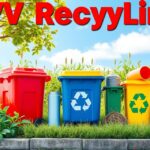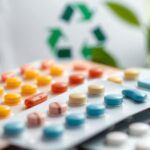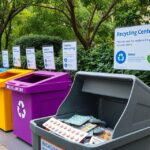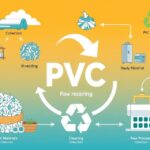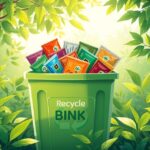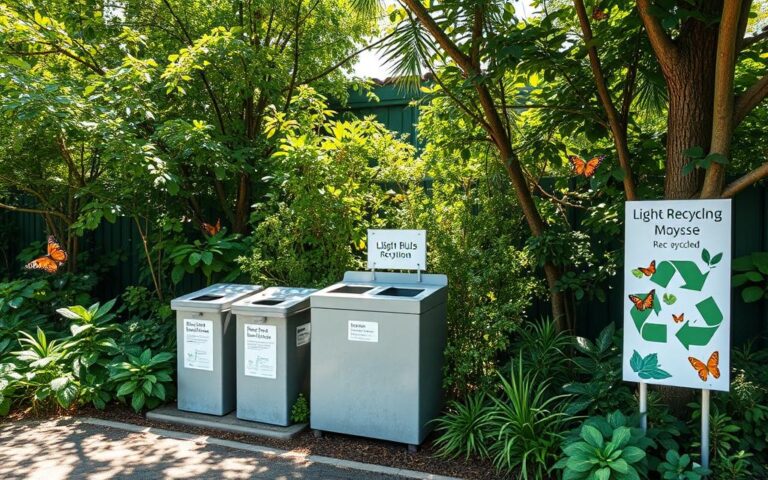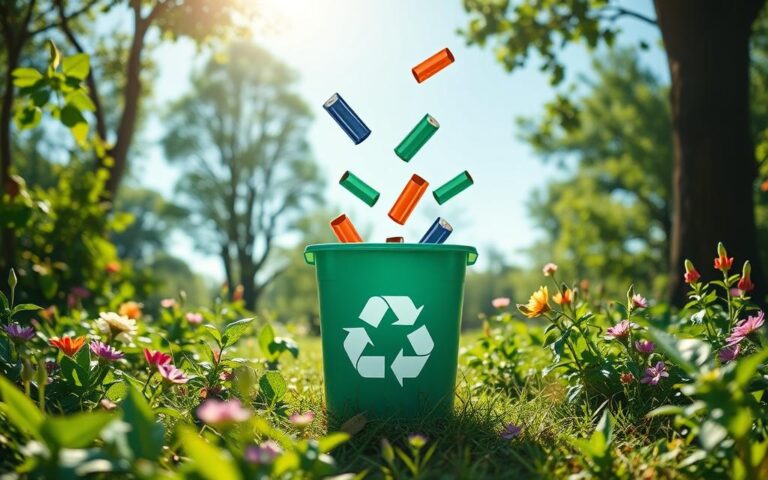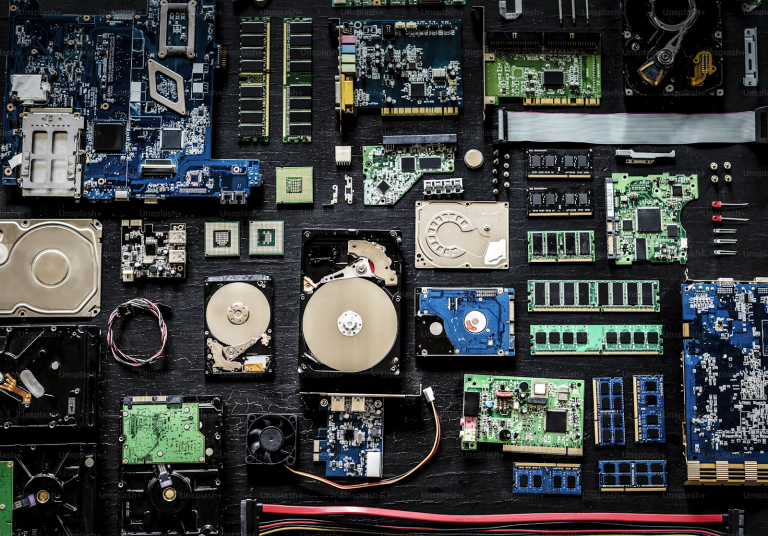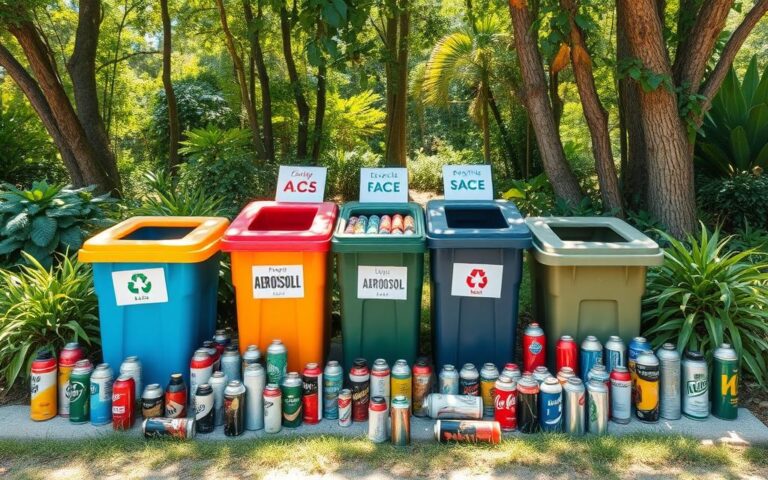Where to Recycle Blister Packs? Safe and Eco-Friendly Disposal
Nowadays, it’s vital to know how to recycle blister packs for the planet’s health. People are understanding the bad effect of plastic waste more each day. Finding safe and green ways to get rid of these packs is essential. Blister packs often come from materials like PVC and PET, which are not easy to recycle. However, with the right process to separate plastic and aluminium, we can reuse these materials.
Stores like Boots and Tesco are planning to grow their blister pack recycling efforts in 2024. Meanwhile, groups like TerraCycle have already gathered millions of packs for safe disposal. This guide will look at different ways to recycle blister packs. We aim to encourage actions that help make our earth greener.
The Environmental Impact of Blister Packs
Blister packs have a big environmental impact. Mostly made of PVC and aluminium, these packs add a lot to waste. This is because they’re used just once. As the market for blister packaging might hit $24.26 billion by 2024, we need to tackle its problems.
The Problem of Microplastics
Microplastics are a major issue coming from plastic items like blister packs. About 100,000 tons of plastic is made each year for medicine packaging. This creates loads of microplastics that end up in our environment. These tiny particles are eaten by marine animals, polluting the food chain. Studies show these microplastics can harm both wildlife and humans.
Effects of Improper Disposal on Ecosystems
Throwing away blister packs wrongly increases contamination of ecosystems. Dumping them with regular rubbish or flushing them pollutes water sources. This ruins habitats for many marine animals. Choosing sustainable alternatives and avoiding bad disposal practices are key to saving our environment.
| Impact Area | Description |
|---|---|
| Waste Generation | Blister packs contribute significantly to the overall waste burden, complicating recycling efforts. |
| Resource Consumption | Manufacturing blister packs requires substantial resources, impacting environmental sustainability. |
| Microplastics | The degradation of blister packs leads to the formation of microplastics, which infiltrate the food chain. |
| Wildlife Risk | Marine life consumption of microplastics poses risks not only to species but also to human health. |
| Ecosystem Contamination | Improper disposal methods pollute water bodies, harming critical habitats for marine organisms. |
Where to Recycle Blister Packs
Recycling blister packs is crucial for cutting down on plastic waste and supporting green practices. Luckily, many options exist to recycle these materials, meeting various consumer needs.
Contact Lens Recycling Programs
Contact lens recycling provides a smart way to get rid of lenses and blister packs. The “One by One” initiative by Bausch + Lomb lets people return any brand’s lenses and packaging. The BioTrue Eye Care Recycling programme, with TerraCycle, offers more choices for recycling eye care products, pushing for responsible disposal.
Zero Waste Box Options
For a bigger impact, Zero Waste options like TerraCycle’s ’empty medicine blister pack zero waste box’ are perfect. Pharmacies provide these to customers, making it easy to recycle blister packs during store visits. This boosts recycling and raises awareness about sustainable practices.
Local Recycling Initiatives
Local recycling initiatives are improving, with more communities accepting rigid plastics in curbside programs. Though some plastics are still not accepted, new sorting technology helps identify and separate different plastic types. Boots and Superdrug have also grown their recycling schemes. Now, people can drop off their empty blister packs at specific locations.
| Company | Recycling Initiative | Details |
|---|---|---|
| Bausch + Lomb | One by One Recycling | Recycles all brands of contact lenses and blister packs. |
| Boots | Blister Pack Scheme | Drop off 15 empty blister packs at selected branches. |
| Superdrug | Blister Pack Recycling | Collaborates with manufacturers like Benadryl and Nurofen. |
| Aldi | Recycling Trial | Trial for customers to post empty blister packs. |
| MyGroup | Processing Scheme | Separates metal foil and converts plastic into MyBoard. |
| TerraCycle | Zero Waste Box | Available for pharmacies to recycle medicine blister packs. |
Understanding the Recycling Process for Blister Packs
Recycling blister packs starts by knowing their parts and the latest recycling tech. These packs have plastics, foil, and sometimes paperboard. It’s key to identify materials in blister packs for good recycling. Separating these materials before throwing them away helps a lot.
Materials Often Found in Blister Packs
Blister packs mainly include:
- Plastic (often PVC or PET)
- Foil (commonly aluminium)
- Paperboard (occasionally used for backing)
Recycling helps save resources if done right. Not all blister packs can be recycled due to their mixed materials. Knowing your local recycling rules is important because recycling places may not take mixed materials.
Recycling Technology Advances
New tech has made recycling blister packs much better. The recycling process has several steps:
| Step | Description |
|---|---|
| 1 | Manual sorting of materials for initial separation. |
| 2 | Shredding the collected blister packs into smaller pieces. |
| 3 | Elutriation to separate plastic and aluminium based on density. |
| 4 | Micronisation to create fine particles from the materials. |
| 5 | Electrostatic separation to differentiate materials using electrical charges. |
| 6 | Melting and extrusion of the materials to produce recycled pellets. |
These recycled pellets are then used in making things like outdoor furniture. By recycling, we save natural resources, reduce energy use, and cut down on pollution.

Choosing Safe and Eco-Friendly Disposal Methods
Efficient recycling is key to reducing our environmental impact. It’s essential for people to know what items can and cannot be recycled. Understanding the rules of recycling can greatly improve its effectiveness. This stops unnecessary waste from ending up in landfills.
What You Can and Cannot Recycle
Dealing with empty blister packs is a common waste challenge. These packs, made from plastic and aluminium foil, are hard to recycle. Many local councils, including those in Leeds, don’t accept them in standard recycling bins. It’s important to dispose of any packs with medicine residue correctly.
- Can recycle: Clean and empty blister packs.
- Cannot recycle: Blister packs with leftover medication.
Some pharmacies, like Superdrug, have special drop-off points for these packets. TerraCycle also offers mail-back recycling, which is an easy way to recycle difficult items.
Mail-Back Options for Hard-to-Recycle Items
Mail-back recycling is great for items that can’t be recycled the usual way. TerraCycle and Sanofi run a scheme where certain pharmacies in the UK accept blister packs. They even provide recycling boxes for home use, in different sizes.
| Box Size | Capacity (number of blister packs) | Price (£) |
|---|---|---|
| Small | 1,500 | 92 |
| Medium | 4,300 | 145 |
| Large | 7,500 | 199 |
When these boxes are full, you can send them back to TerraCycle for free using a pre-paid UPS label. This makes recycling easy and supports eco-friendly disposal.
Conclusion
Reflecting on the challenges posed by blister packs shows how crucial recycling is. It’s not just an option, but a must. In Europe, 85% of tablets are packaged this way, creating lots of composite waste. Through smart recycling, we can greatly reduce our environmental footprint.
By improving how we package things, we could cut waste by 37%. For Germany’s pharmaceutical market, this means lessening waste by over 3000 tons a year. This shows the big difference responsible recycling practices can make towards our planet’s health.
Every person plays a key part in promoting greener waste disposal. By knowing about and using the right recycling methods, we all help. It’s important we keep learning and pushing for good waste management. This way, we’ll safeguard Earth for the years to come.
FAQ
Can I recycle blister packs at home?
Yes, you can recycle blister packs at home. First, ensure you check your local recycling guidelines. Curbside programs may take certain blister packs, but they must be clean and free of any medication.
What should I do with used contact lenses and their blister packs?
Don’t put used contact lenses or their packs in general waste. Recycle them through programs like Bausch + Lomb’s “One by One” or the BioTrue Eye Care Recycling programme. Mail-back options are also available for these items.
Are there any environmental impacts associated with improper disposal?
Improper disposal leads to serious environmental issues, like microplastic pollution. Items like contact lenses, when not disposed of correctly, can harm wildlife and human health. They break into small, dangerous particles that contaminate our planet.
What materials are found in blister packs?
Blister packs usually consist of plastic, paperboard, and aluminium. Knowing these materials helps with their proper separation for recycling. This step is important for efficient processing.
How does advanced recycling technology improve recycling efforts?
Advanced technology boosts our recycling capabilities, especially for complex items like blister packs. It improves the separation and repurposing of materials. Thus, it enhances recycling efficiency and cuts down waste.
What guidelines should I follow for recycling blister packs?
For recycling blister packs correctly, ensure they’re clean and medication-free. Learn about local rules, as some may need you to use mail-back options. This way, recycling works more smoothly.
Why is it important to be educated about recycling practices?
Learning about recycling is key because it helps you make choices that help our planet. Being aware of how to recycle correctly reduces waste and encourages sustainable living.


